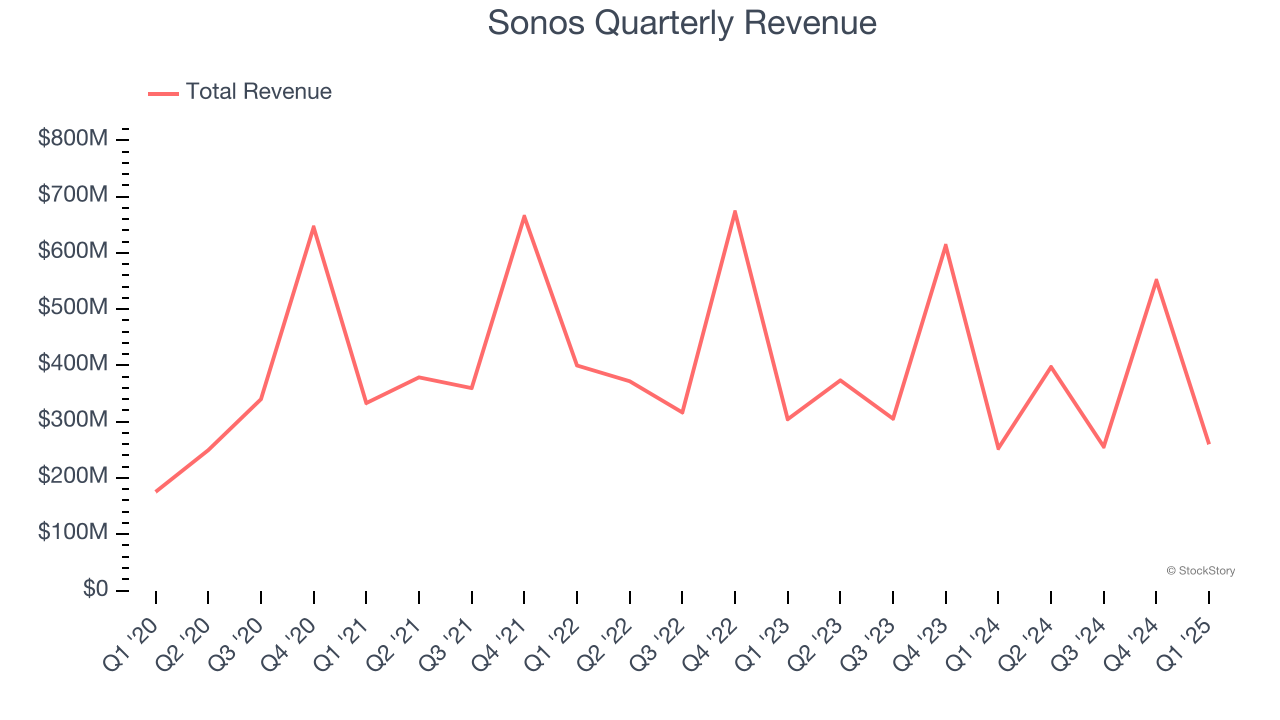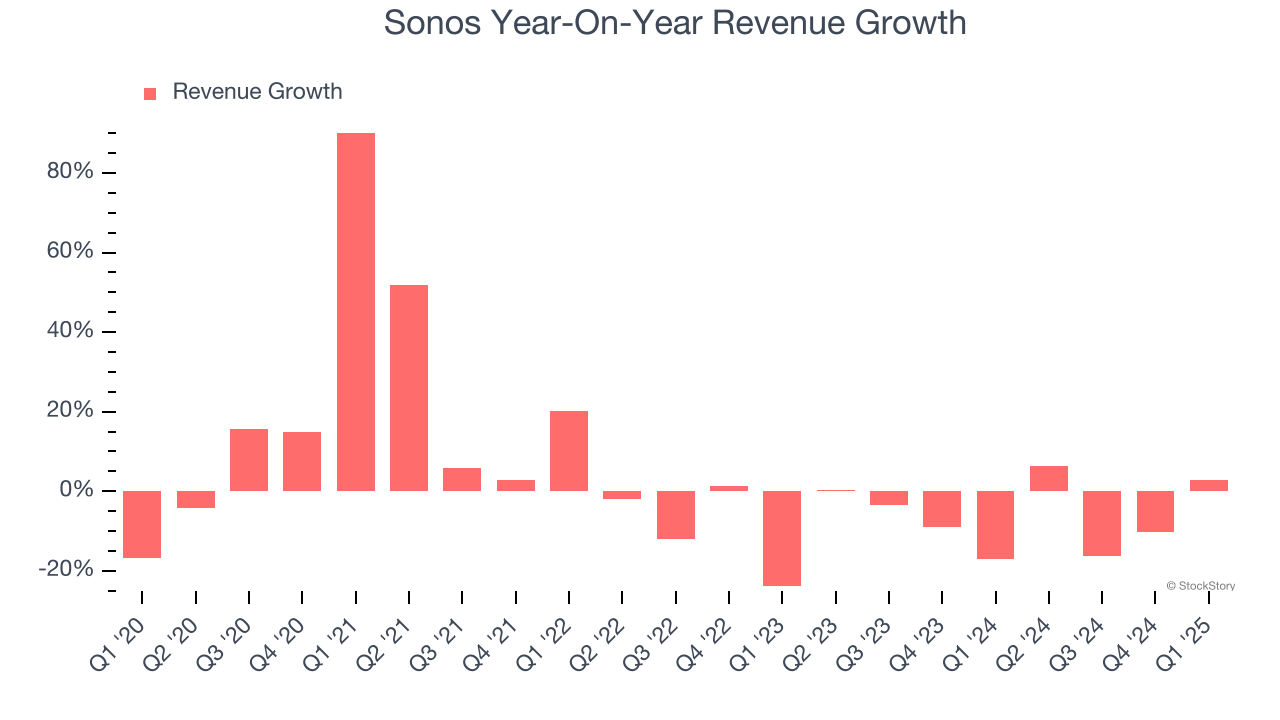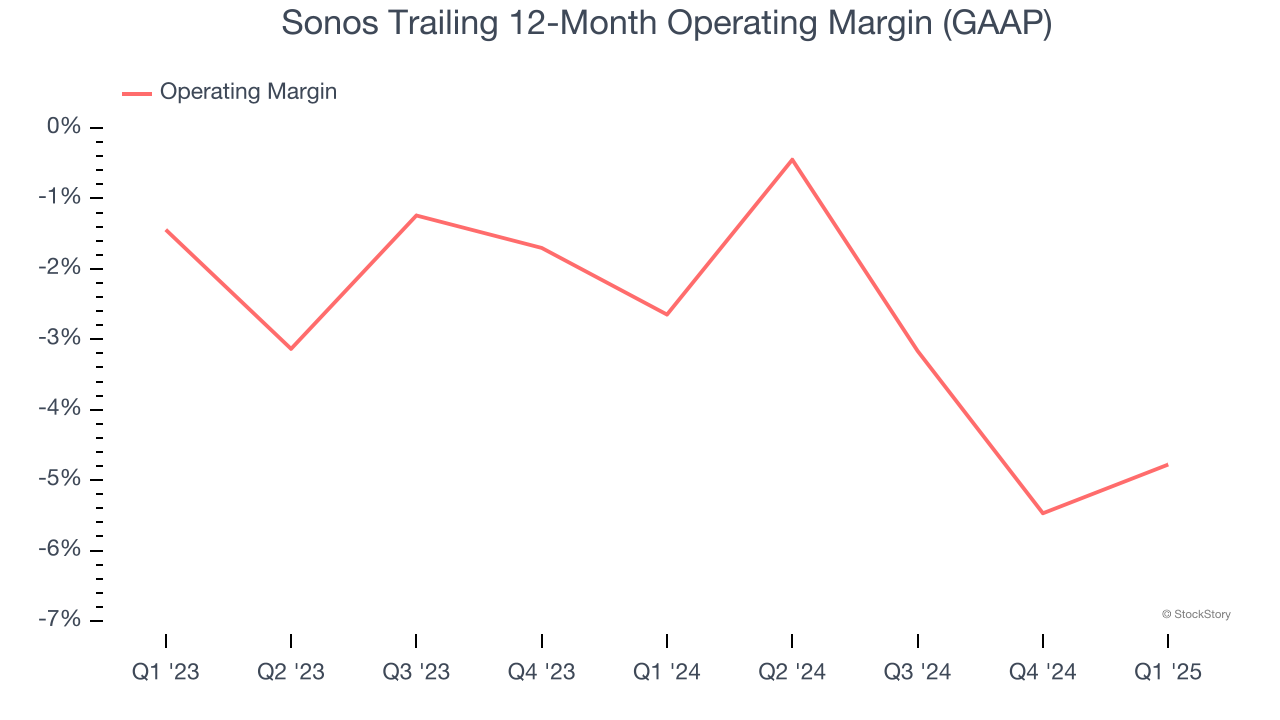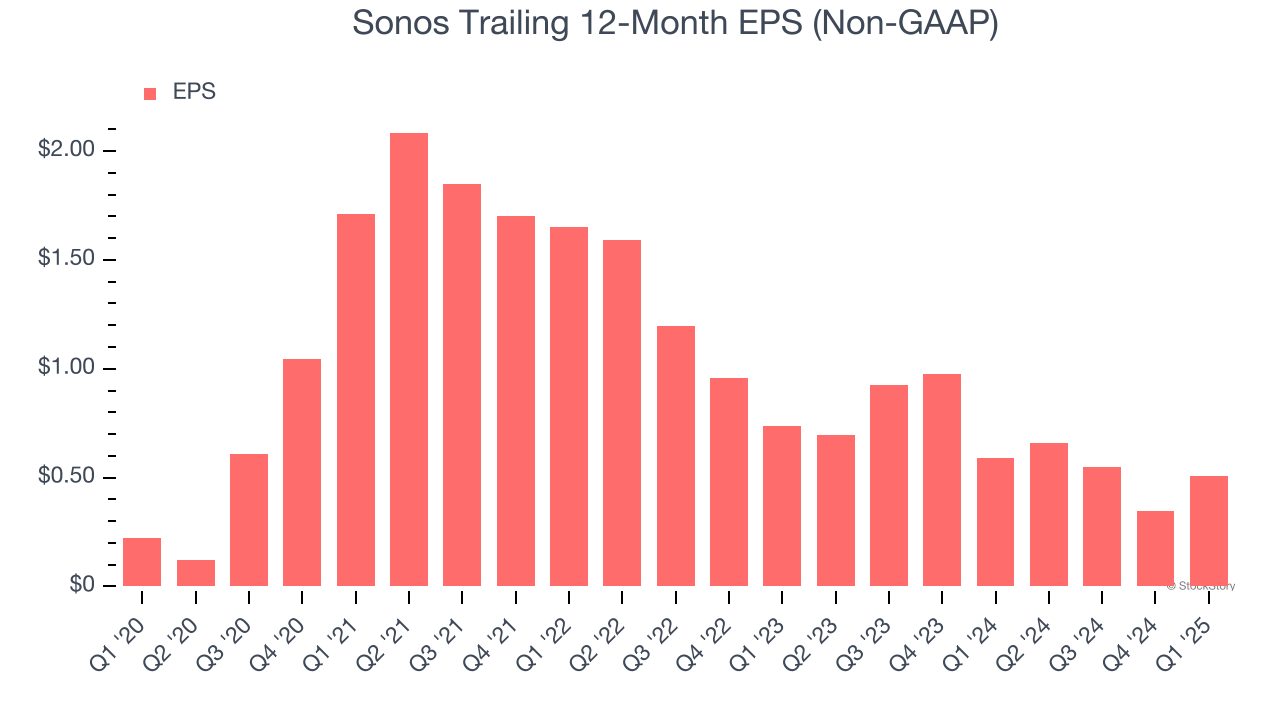
Audio technology Sonos company (NASDAQ: SONO) reported Q1 CY2025 results beating Wall Street’s revenue expectations, with sales up 2.8% year on year to $259.8 million. Its non-GAAP loss of $0.18 per share was 24.1% below analysts’ consensus estimates.
Is now the time to buy Sonos? Find out by accessing our full research report, it’s free.
Sonos (SONO) Q1 CY2025 Highlights:
- Revenue: $259.8 million vs analyst estimates of $255.1 million (2.8% year-on-year growth, 1.8% beat)
- Adjusted EPS: -$0.18 vs analyst expectations of -$0.15 ($0.03 miss)
- Adjusted EBITDA: -$826,000 vs analyst estimates of -$19.2 million (-0.3% margin, large beat)
- Operating Margin: -23.6%, up from -28.1% in the same quarter last year
- Free Cash Flow was -$65.22 million compared to -$121.4 million in the same quarter last year
- Market Capitalization: $1.09 billion
“We made significant progress in Q2 across our top initiatives,” said Tom Conrad, Sonos Interim Chief Executive Officer.
Company Overview
A pioneer in connected home audio systems, Sonos (NASDAQ: SONO) offers a range of premium wireless speakers and sound systems.
Sales Growth
Reviewing a company’s long-term sales performance reveals insights into its quality. Any business can put up a good quarter or two, but many enduring ones grow for years. Regrettably, Sonos’s sales grew at a weak 2.5% compounded annual growth rate over the last five years. This fell short of our benchmarks and is a tough starting point for our analysis.

Long-term growth is the most important, but within consumer discretionary, product cycles are short and revenue can be hit-driven due to rapidly changing trends and consumer preferences. Sonos’s performance shows it grew in the past but relinquished its gains over the last two years, as its revenue fell by 6.3% annually. 
This quarter, Sonos reported modest year-on-year revenue growth of 2.8% but beat Wall Street’s estimates by 1.8%.
Looking ahead, sell-side analysts expect revenue to remain flat over the next 12 months. While this projection implies its newer products and services will fuel better top-line performance, it is still below the sector average.
Today’s young investors won’t have read the timeless lessons in Gorilla Game: Picking Winners In High Technology because it was written more than 20 years ago when Microsoft and Apple were first establishing their supremacy. But if we apply the same principles, then enterprise software stocks leveraging their own generative AI capabilities may well be the Gorillas of the future. So, in that spirit, we are excited to present our Special Free Report on a profitable, fast-growing enterprise software stock that is already riding the automation wave and looking to catch the generative AI next.
Operating Margin
Operating margin is an important measure of profitability as it shows the portion of revenue left after accounting for all core expenses – everything from the cost of goods sold to advertising and wages. It’s also useful for comparing profitability across companies with different levels of debt and tax rates because it excludes interest and taxes.
Sonos’s operating margin has been trending down over the last 12 months and averaged negative 3.7% over the last two years. Unprofitable consumer discretionary companies with falling margins deserve extra scrutiny because they’re spending loads of money to stay relevant, an unsustainable practice.

In Q1, Sonos generated a negative 23.6% operating margin. The company's consistent lack of profits raise a flag.
Earnings Per Share
Revenue trends explain a company’s historical growth, but the long-term change in earnings per share (EPS) points to the profitability of that growth – for example, a company could inflate its sales through excessive spending on advertising and promotions.
Sonos’s EPS grew at a remarkable 17.8% compounded annual growth rate over the last five years, higher than its 2.5% annualized revenue growth. This tells us the company became more profitable on a per-share basis as it expanded.

In Q1, Sonos reported EPS at negative $0.18, up from negative $0.34 in the same quarter last year. Despite growing year on year, this print missed analysts’ estimates, but we care more about long-term EPS growth than short-term movements. Over the next 12 months, Wall Street expects Sonos to perform poorly. Analysts forecast its full-year EPS of $0.50 will hit $0.21.
Key Takeaways from Sonos’s Q1 Results
Revenue beat and adjusted EBITDA beat by a convincing amount. Zooming out, we think this was a decent quarter featuring some important areas of strength. The stock traded up 6.9% to $9.57 immediately following the results.
Is Sonos an attractive investment opportunity at the current price? When making that decision, it’s important to consider its valuation, business qualities, as well as what has happened in the latest quarter. We cover that in our actionable full research report which you can read here, it’s free.




